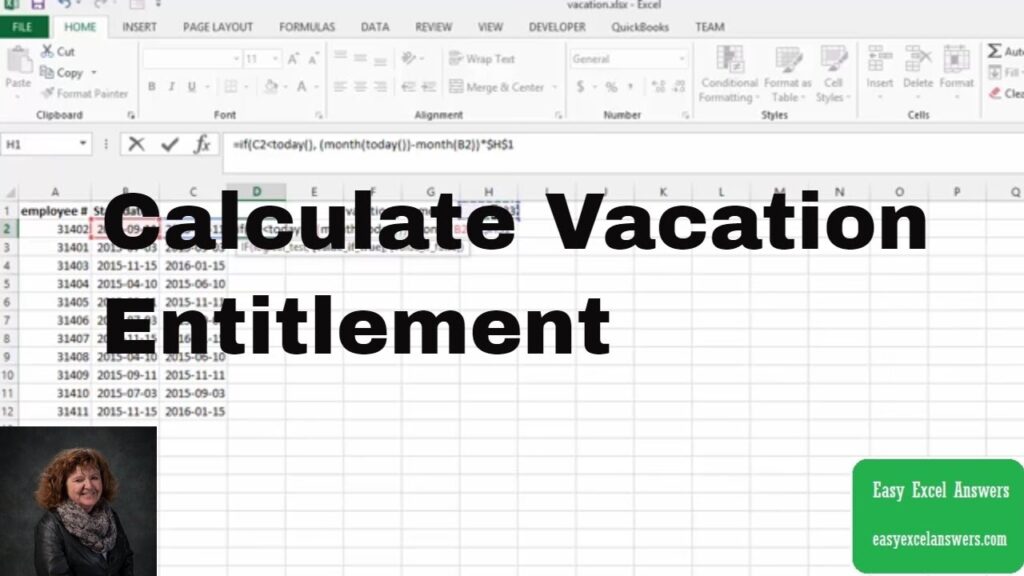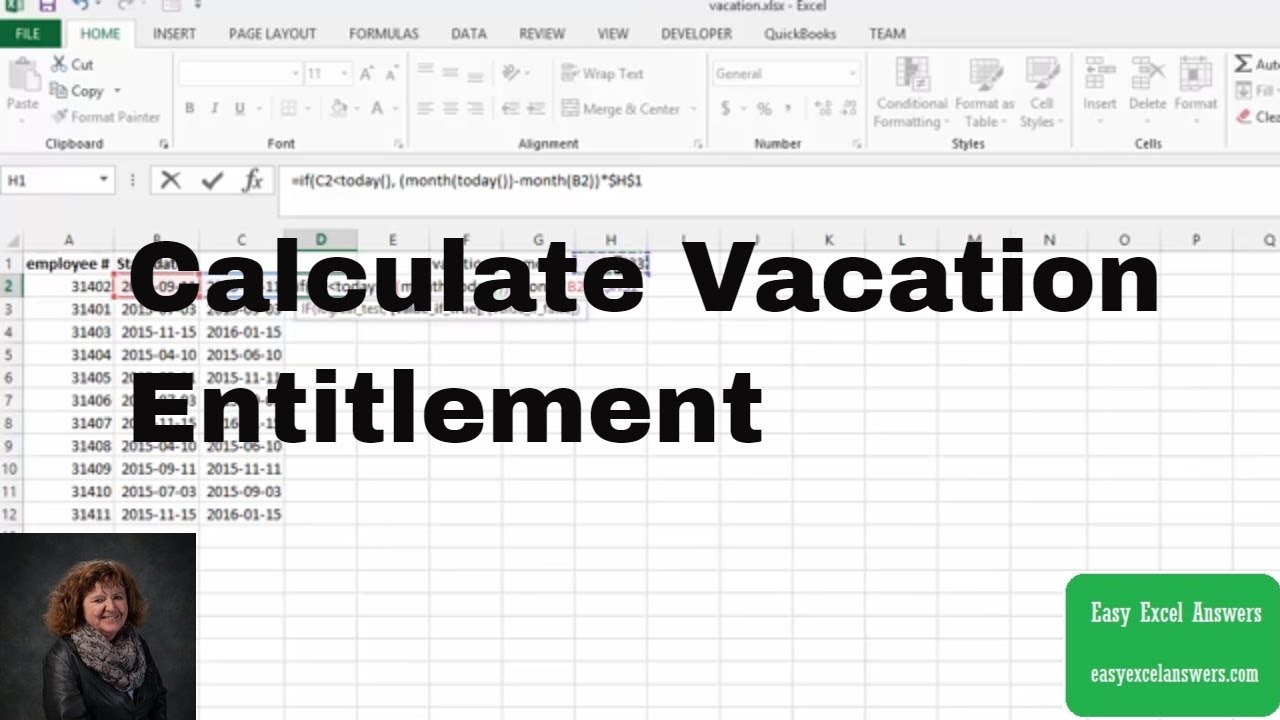
Calculate Prorated Vacation Time: A Comprehensive Guide
Understanding how to calculate prorated vacation time is crucial for both employers and employees. Prorated vacation time refers to the allocation of vacation days based on the actual time an employee has worked within a specific period, rather than granting the full vacation entitlement at the beginning of the year. This is particularly relevant for employees who start or leave a job mid-year, work part-time, or take extended leaves of absence. This guide will delve into the intricacies of calculating prorated vacation time, providing clear explanations, examples, and best practices.
Why Prorated Vacation Time Matters
Prorating vacation time ensures fairness and accuracy in allocating time off. Without a prorated system, employees starting mid-year might receive the same vacation benefits as those who have worked the entire year, which can lead to inequities. Similarly, those leaving the company before the end of the year might unfairly benefit from vacation days they haven’t fully earned. Properly calculating prorated vacation time helps maintain a balanced and equitable system for all.
Methods for Calculating Prorated Vacation Time
There are several methods to calculate prorated vacation time. The most common include:
Proportional Method
The proportional method calculates vacation time based on the proportion of the year an employee has worked. This is a straightforward and widely used approach.
Formula: (Total Vacation Days / Number of Working Days in a Year) * Number of Days Worked
Example: Suppose an employee is entitled to 20 vacation days per year and starts working on April 1st. Assuming a standard work year of 260 days (5 days a week for 52 weeks), and they work for 195 days (from April 1st to December 31st), the calculation would be:
(20 / 260) * 195 = 15 vacation days
Accrual Method
The accrual method involves accumulating vacation time incrementally over a period, typically monthly or bi-weekly. This method is particularly useful for companies that want to track vacation time more precisely.
Formula: (Total Vacation Days / Number of Pay Periods) * Number of Pay Periods Worked
Example: If an employee is entitled to 20 vacation days per year and is paid bi-weekly (26 pay periods), the accrual rate would be:
20 / 26 = 0.77 vacation days per pay period
If the employee works for 13 pay periods, they would accrue:
0.77 * 13 = 10.01 vacation days (approximately 10 days)
Simplified Monthly Method
This is a simplified version of the accrual method, where vacation time is accrued on a monthly basis.
Formula: (Total Vacation Days / 12) * Number of Months Worked
Example: If an employee is entitled to 20 vacation days per year and works for 6 months, the calculation would be:
(20 / 12) * 6 = 10 vacation days
Factors Affecting Prorated Vacation Time Calculation
Several factors can influence how prorated vacation time is calculated. These include:
- Company Policy: The specific policies of the company regarding vacation time, accrual rates, and carry-over rules.
- Employment Contract: Any specific agreements outlined in the employment contract.
- State Laws: Some states have laws governing vacation time and payout requirements.
- Start and End Dates: The exact start and end dates of employment significantly impact the calculation.
- Leave of Absence: Periods of unpaid leave may affect the accrual of vacation time.
Best Practices for Implementing Prorated Vacation Time
To effectively implement a prorated vacation time system, consider the following best practices:
- Clear Policy Documentation: Develop a comprehensive and clear vacation policy that outlines how vacation time is accrued, prorated, and used. Ensure all employees have access to this policy.
- Consistent Application: Apply the vacation policy consistently across all employees to avoid perceptions of unfairness.
- Accurate Record-Keeping: Maintain accurate records of employee start dates, end dates, and any leaves of absence.
- Automated Systems: Utilize HR software or time-tracking systems to automate the calculation and tracking of vacation time.
- Communication: Clearly communicate the vacation policy to employees during onboarding and provide regular updates as needed.
- Legal Compliance: Stay informed about state and federal laws regarding vacation time and ensure your policies comply with these regulations.
Common Scenarios and Examples
Scenario 1: New Employee Starting Mid-Year
An employee starts on July 1st and is entitled to 15 vacation days per year. Using the simplified monthly method:
(15 / 12) * 6 = 7.5 vacation days
The employee would be entitled to 7.5 vacation days for the remainder of the year.
Scenario 2: Employee Leaving Mid-Year
An employee leaves on June 30th and is entitled to 20 vacation days per year. Using the simplified monthly method:
(20 / 12) * 6 = 10 vacation days
The employee would have accrued 10 vacation days up to their termination date. Depending on company policy and state law, these days may be paid out.
Scenario 3: Part-Time Employee
A part-time employee works 20 hours per week and is entitled to 10 vacation days per year (for full-time employees). If a full-time employee works 40 hours a week, the prorated vacation time for the part-time employee would be:
(20 / 40) * 10 = 5 vacation days
The part-time employee would be entitled to 5 vacation days.
The Role of HR Software in Managing Vacation Time
HR software plays a vital role in managing and calculating prorated vacation time. These systems automate the accrual process, track employee time off, and ensure compliance with company policies and legal requirements. By using HR software, companies can reduce the risk of errors, save time, and provide employees with a transparent view of their vacation time balance.
Legal Considerations for Prorated Vacation Time
It is essential to be aware of the legal considerations surrounding vacation time. Some states have laws that require employers to pay out accrued vacation time upon termination of employment. Additionally, some states may have specific rules regarding the accrual and use of vacation time. Employers should consult with legal counsel to ensure their vacation policies comply with all applicable laws.
Addressing Employee Questions and Concerns
When implementing a prorated vacation time system, it’s important to address employee questions and concerns. Provide clear explanations of how vacation time is calculated and ensure employees understand the company’s vacation policy. Be prepared to answer questions about accrual rates, carry-over rules, and payout policies. Transparency and open communication can help build trust and ensure employee satisfaction.
Final Thoughts on Calculating Prorated Vacation Time
Calculating prorated vacation time is an essential aspect of managing employee benefits. By implementing a fair and transparent system, companies can ensure equitable treatment of all employees and maintain compliance with legal requirements. Whether using the proportional method, accrual method, or simplified monthly method, the key is to have a well-documented policy, accurate record-keeping, and clear communication. Regularly review and update your vacation policies to reflect changes in company needs and legal regulations. Accurately calculate prorated vacation time to maintain a positive and legally compliant workplace.
By understanding and properly implementing calculating prorated vacation time, businesses can ensure fairness, compliance, and a positive employee experience. [See also: Employee Time Off Policy Examples] [See also: Accrued Vacation Time Laws] [See also: HR Software for Time Tracking]

